Environmental Integration on ...
Online Conference
10 Apr 2025 / 12 Apr 2025 read more

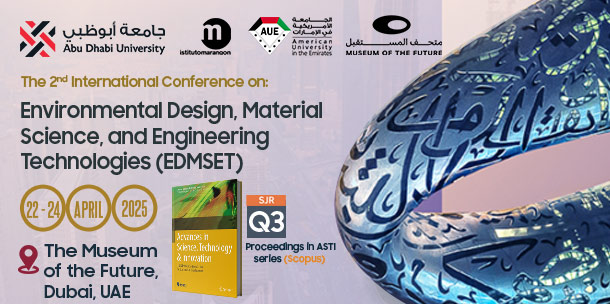
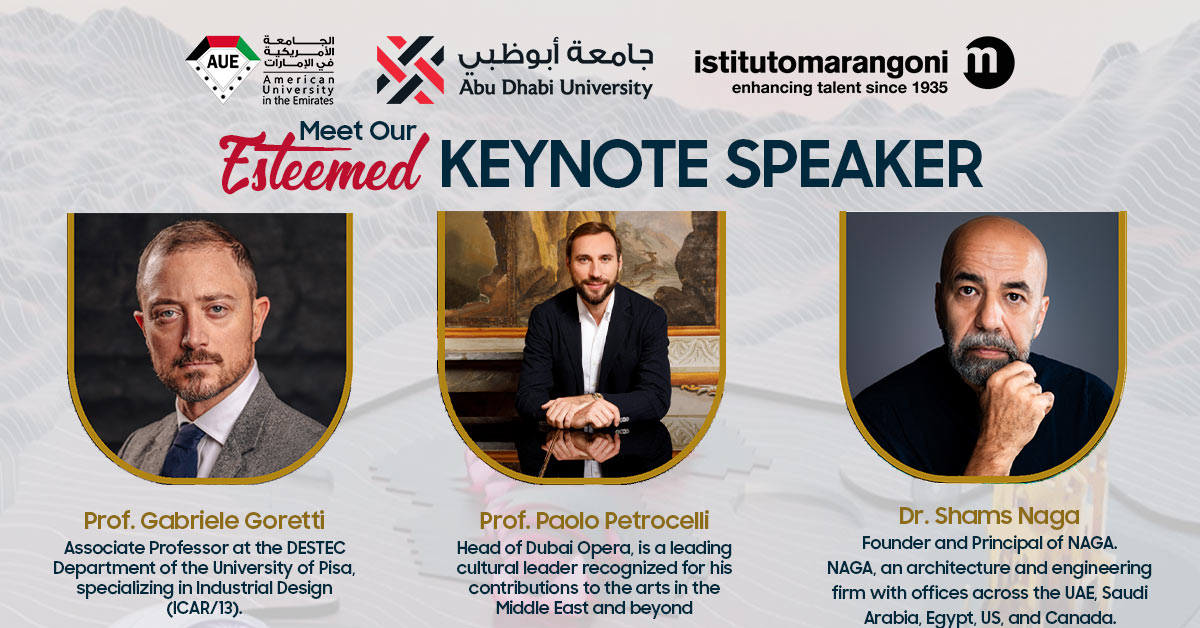
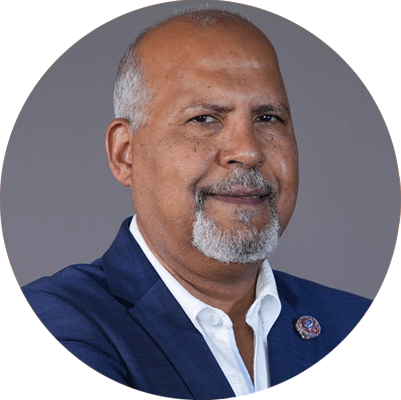
Associate Professor
Department of Architecture and Interior Design, Abu Dhabi University, UAE

President of the Italian Academy of Biophilia (AIB), is an Environmental Psychologist and a prominent expert in Biophilic Design.
Istituto Marangoni Dubai – UAE
Subscribe to our newsletter
The course of humankind’s evolution and the extraordinary advances the world has witnessed over centuries emphasize the affiliation between innovation and progress, at the heart of this journey lies the fundamental role of engineering in advancing civilization. From the earliest tools, like the invention of the wheel, to the most complex systems that define our modern world like the construction of monumental structures, engineering has been the driving force behind the development of technologies that shape and define the course of human history. The impact of engineering extends far beyond individual achievements. The true essence of engineering lies in the synergy and interdependence of its different disciplines. Mechanical, civil, electrical, and multiple other branches collaborate in harmony, each contributing unique expertise to enhance the quality of life and push the civilization forward. The collaborative spirit of engineering disciplines reflects the interrelation of our technological landscape, where advancements in one domain can catalyze breakthroughs in another. This congruent exchange ensures that our collective progress is not isolated but rather a collaborative effort to overcome the challenges of our time.
In the midst of all of this, Materials Engineering emerges as a cornerstone in this collaborative effort, reinforcing the foundations of progress across various engineering domains. The significance of materials science lies in its ability to influence and support innovations in aerospace, biomedical research, electronics, and beyond. The goal of materials science and engineering is to comprehend the underlying physical causes of material behavior to create new and improved materials, modify the structure of existing materials, and figure out why some materials unexpectedly fail. Understanding the importance of materials engineering is crucial to appreciate how advancements in this discipline can have a ripple effect, permeating and transforming other engineering realms. The understanding of materials allows engineers to create structures and technologies that are not only efficient but also sustainable and resilient, thus contributing to the holistic advancement of our civilization.
IEREK is proud to announce the second edition of the "Environmental Design, Material Science, and Engineering Technologies" conference. Building on the success of the inaugural conference, the second edition aims to transcend the boundaries of conventional discourse and propel discussions to new heights.
Conference Scope
This conference aims to create a dynamic platform for professionals, researchers, and enthusiasts from diverse engineering disciplines, including chemical engineering, material sciences, environmental design, and industrial engineering. The primary objective is to promote an environment where participants can share insights, and collaborate to address contemporary challenges in these multifaceted fields. Discussions will include multiple topics, encompassing the latest advancements in structural engineering, renewable energy, sustainable material sciences, environmental integration, and the intersection of various engineering disciplines.
Statement of Purpose
The objective of the conference is to provide an interactive and interdisciplinary platform where participants can discuss the latest advancements, share innovative insights, and collectively address the evolving challenges within these dynamic fields. Through engaging keynote sessions and collaborative discussions, the conference aims to provide a spirit of inquiry, collaboration, and forward thinking. As the intricate interplay of engineering disciplines and environmental considerations is navigated, this conference aspires to be a catalyst for transformative ideas and sustainable solutions.
Join us in this intellectual journey, as we strive to shape the future of environmental design, material science, and engineering technologies. Innovative designs, sustainable practices, and urban planning principles ensure that our built environment aligns with the evolving needs of our communities. The thoughtful integration of these elements fosters a more resilient and inclusive civilization, where the spaces we inhabit are not just structures but integral components of a dynamic and interconnected societal ecosystem.
1.1. Adaptive Structural Systems for Changing Environments
1.2. Novel Approaches to Seismic Design and Resilience
1.3. Sustainable Construction Practices in Structural Engineering
1.4. Smart City Integration: IoT and Urban Connectivity
1.5. Bioclimatic Design for Energy-Efficient Buildings
1.6. Parametric Urban Design and Computational Planning
1.7. Circular Economy Principles in Urban Development
1.8. Resilient Urban Infrastructure Planning and Design
1.9. Sustainable Façade Design for Energy Efficiency
2.1. Green Infrastructure and Urban Sustainability
2.2. Net-Zero Energy Buildings: Design Strategies and Technologies
2.3. Urban Heat Island Mitigation and Climate Adaptation Strategies
2.4. Transit-Oriented Development and Sustainable Transportation Planning
2.5. Renewable Energy Integration in Urban Design
2.6. Resilient Urban Design: Strategies for Disaster Risk Reduction
2.7. Building Information Modeling (BIM)
2.8. Circular Economy Principles in Urban Design
2.9. Materials and Technologies in Urban Infrastructure Development
2.10. 3D Printing and Construction Industry Disruption
2.11. Smart Cities and Technology Integration in Urban Environments
2.12. Indoor Environmental Quality and Occupant Comfort
3.1. Innovative Materials and Methods for Architectural Heritage Preservation
3.2. Conservation Approaches for Historic Buildings and Structures
3.3. Heritage Assessment and Documentation Techniques
3.4. Adaptive Reuse and Sustainable Restoration of Historic Buildings
3.5. Digital Technologies for Heritage Conservation and Restoration
3.6. Conservation Ethics and Principles in Architectural Heritage Preservation
3.7. Community Engagement in the Preservation of Architectural Heritage
3.8. Preservation of Vernacular Architecture and Traditional Building Techniques
3.9. Case Studies in Successful Architectural Heritage Preservation Projects
4.1. Sustainable Materials in Interior Design
4.2. Biophilic Design
4.3. Energy-Efficient Lighting and HVAC Systems
4.4. Smart and Connected Interior Spaces
4.5. Universal Design and Inclusivity
4.6. Sustainable Furniture and Product Design
4.7. Adaptive Reuse and Historic Preservation
4.8. Biodegradable and Compostable Interiors
4.9. IEQ, Occupant Health and Well-being
4.10. Craft Production and Fabrication
4.11. Lighting & Acoustics in Design and Construction
5.1. Computational Modeling in Metallurgical Processes
5.2. Advanced Steel Alloys for Structural Applications
5.3. Composite Materials in Structural Engineering
5.4. Responsive Polymers for Smart Applications
5.5. Corrosion and Surface Engineering
5.6. Sustainable Materials in Infrastructure
5.7. Eco-Friendly Materials in Sustainable Construction
6.1. Bioprocess Engineering and Biotechnology
6.2. Carbon Capture and Utilization in Chemical Engineering
6.3. Waste-to-Energy Conversion Methods
6.4. Renewable Energy Integration in Chemical Processes
6.5. Environmental Impact Assessment in Chemical Engineering
6.6. Digital Transformation in Chemical Processes
6.7. Chemical Process Modeling and Simulation
6.8. Sustainable Materials and Biomaterials in Chemical Engineering
6.9. Life Cycle Assessment and Environmental Impact of Chemical Processes
7.1. Waste Reduction and Circular Economy Practices
7.2. Ecosystem Conservation and Biodiversity Preservation
7.3. Water Resource Management and Conservation
7.4. Carbon Footprint Reduction Strategies
7.5. Climate-Adaptive Urban Planning
7.6. Resilience Planning for Climate-Related Risks
7.7. Corporate Social Responsibility and Environmental Sustainability
7.8. SDGs and Strategic Management for Environmental Sustainability
7.9. Sustainable Business Models and Strategies
8.1. Solar Energy Harvesting and Photovoltaic Technologies
8.2. Advances in Wind Turbine Design and Efficiency
8.3. Hydropower Plant Modernization and Optimization
8.4. Geothermal Energy: Exploration and Utilization
8.5. Grid Integration Challenges and Solutions
8.6. Advancements in Battery Technologies for Renewable Energy
8.7. Solar Energy integration in building design
8.8. Sustainable Development and Deployment of Renewable Energy Systems
8.9. Smart Technologies in Renewable Energy
9.1. Implementation of Lean Principles in Production Processes
9.2. Supply Chain Optimization and Logistics
9.3. Human Factors Engineering and Ergonomics
9.4. Smart Manufacturing and Cyber-Physical Systems
9.5. Facility Layout and Design Optimization
9.6. Eco-Friendly Practices in Industrial Processes
9.7. Green and Sustainable Manufacturing
9.8. Quality Control and Quality Management Engineering
9.9. Industrial Engineering in Healthcare Systems and Services
9.10 Industrial and construction applications of 3D printing
9.11 Total Quality Management
10.1. Additive Manufacturing (3D Printing) and CNC Machining
10.2. Advanced Machining Processes and Precision Engineering
10.3. Fabrication of Micro and Nanostructures for Components
10.4. Sustainable Materials and Manufacturing Processes
10.5. Automation and Control Systems
10.6. Power Systems and Renewable Energy Integration
10.7. Advanced Materials Engineering and Nanotechnology
10.8. Composite Materials Fabrication
11.1. Ground Improvement Techniques
11.2. Geosynthetics and Reinforced Soil Structures
11.3. Advanced Foundation Engineering
11.4. Seismology and Earthquake Engineering
11.5. Geotechnical Monitoring and Instrumentation
11.6. Soil Stabilization and Reinforcement Techniques
11.7. Offshore Geotechnics and Subsea Engineering
11.8. Geoenvironmental Engineering for Site Remediation
11.9. Sustainability in Geotechnical Engineering Practices
11.10 Hydraulic Works and Applications
12.1. The Continuous Evolution of Artificial Intelligence
12.2. Soft Robotics and its Applications
12.3. The Internet of Things in Contemporary Sciences and Disciplines
12.4. Automation of Processes and Sensing Networks
12.5. Innovations in Front-end Development and Mediums of Representation
12.6. Advancements in Simulation Methods and Modelling Systems
| Title | Date |
|---|---|
| Abstract Submission Deadline (3rd Round) | 22 Jan 2025 |
| Last Notification for Abstract Acceptance & Approval to present | 31 Jan 2025 |
| Regular Payment Deadline | 31 Jan 2025 |
| Late Payment Deadline | 28 Feb 2025 |
| Ministry of Education's (MOE) Form *Mandatory for physical presentations* | 22 Jan 2025 |
| Full Paper Submission Deadline | 28 Feb 2025 |
| Notification of acceptance/rejection of submitted full paper | 14 Mar 2025 |
| Conference Program | 08 Apr 2025 |
| Conference Launch | 22 Apr 2025 |
- The registration fee does not cover accommodation or travel expenses. A list of accommodation options can be suggested by our team if available. Please contact [email protected] for inquiries.
- A 5% VAT are applicable to the conference fees.We recommend that all authors take advantage of the benefits that IEREK offers, including various attendance types, publishing opportunities, and opportunities for discounts and waivers.
IEREK offers many types of registrations that are diverse in registration fees; applicants can choose the type they are familiar with as follows:
Participants who are PhD holders, post-doctoral researchers, and universities’ affiliated professors and experts in the field.
Must provide proof of enrollment in a university by providing an enrollment certificate and/or a valid university ID (with issue/expiry date) etc.
Participants who are not affiliated with universities such as practitioners, policymakers, entrepreneurs, etc.
Have access to the event to enjoy the discussions, coffee breaks, and lunch as a co-author or audience.
An author may need to attend the conference for presentation only to present a research idea without publication or full paper submission; the fee in this case will be decreased.
| Type of Registration | Regular Payment Deadline Till 31 Jan 2025 |
Late Payment Deadline Till 15 Feb 2025 |
|---|---|---|
| Attendee / Audience | 200 € | 300 € |
| Guest Speaker / Professional Speaker | 600 € | 800 € |
1- This valuable opportunity gathers pioneers, business owners, keynote speakers, hiring agencies, and more to exchange knowledge and experiences, aiming to gain the most benefit from the conference.
2- We welcome the participation of all keynote speakers at the conference. Keynote speakers from various fields are invited, including those from design firms, film production companies, recruitment agencies, real estate companies, diverse brands, and more.
3- The fees include: a certificate, lunch and coffee break and Full entry to all presentations, panel discussions, and workshops during the opening day at the Museum of the Future.
The opening fee covers:
| Type of Registration | Regular Payment Deadline 31 Jan 2025 |
Late Payment Deadline 28 Feb 2025 |
|---|---|---|
| Scopus indexed-ASTI Book by Springer | ||
| Student | 350 € | 400 € |
| Academic / Professional | 400 € | 450 € |
| Co-author/ Audience | 250 € | 350 € |
| Open Access IEREK Press Journals | ||
| Student | 300 € | 350 € |
| Academic / Professional | 350 € | 400 € |
| Co-author/ Audience | 250 € | 350 € |
The physical fee covers:
Each research paper should have one main author who should pay the full fee (Author fees) regardless of attendance. Co-authors, each, have their own fees to pay to attend the event. This applies to online attendance as well as physical attendance.
A research paper fee allows only one author, whether main or co-author, to attend the conference and receive only one copy of the conference Abstract book in both hard and soft copies. Extras can be requested for an additional fee.
Students must provide proof of enrollment in a university by providing an enrollment certificate or a valid university ID (with issue/ expiry date) etc.
Additionally, you have the option to present your submitted abstract as a presentation without the intention of publishing your work, for information about the fees and additional details, please feel free to get in touch with us at: [email protected]
| Type of Registration | Regular Payment Deadline 31 Jan 2025 |
Late Payment Deadline 28 Feb 2025 |
|---|---|---|
| Scopus indexed-ASTI Book by Springer | ||
| Student | 300 € | 350 € |
| Academic/Professional | 350 € | 400 € |
| Co-author/ Audience | 150 € | 200 € |
| Open Access IEREK Press Journals | ||
| Student | 250 € | 300 € |
| Academic/ Professional | 300 € | 350 € |
| Co-author/ Audience | 150 € | 200 € |
A softcopy of the abstracts book and/ or hard copy (excluding shipping)
IEREK Participation/ Contribution Certificate in softcopy
Acceptance Letters in softcopy
Consideration for publishing in the IEREK ASTI series by Springer or IEREK Press
Access to conference recordings
|
*Authors may request that their kits be delivered, for an additional fee decided by the courier, and upon request. Alternatively, authors located in Egypt can pick them up from Cairo/ Alexandria office. *Gala Dinner, social programs, and other activities. |
|
|
Additional Conference Kit (Excluding Delivery) *Contact us for a quotation on shipping fees. |
100 € |
Payment Methods
***PLEASE NOTE that a 5% VAT will be applied on the conference fees***
Payment of the registration fee can be made via the following methods (only after online registration):
1. Bank Transfer
Option 1
Account name: Publishing Direct Conferences CO. LLC
Bank Name: Emirates NBD
Swift code: EBILAEADXXX
Account in Euro: AE090260001025884084202
Account in Dirhams: AE980260001015884084201
Option 2
Bank Account Name/ Beneficiary name: IEREK
Beneficiary (IEREK) Address:11 Behera St. Janaklis, Abu Qir, Alexandria, Egypt
Bank Account (EUR): 100023143822
IBAN: EG730010005600000100023143822
SWIFT/BIC: CIBEEGCX044
Bank Name: Commercial International Bank (CIB) – Egypt S.A.E
Bank Address: 649 EL Horreya Rd, Janaklis, Elraml, Alexandria, Egypt
postcode: 21141
VAT ID: 463-523-873
Reason for Transaction: “EDMSET 2025 Participation”
NOTES:
*** Please note that a 5% VAT will be applied on the conference fees***
*** Please note that the transaction fee is solely the payee’s/ Remitter’s responsibility. The beneficiary
should receive the total amount specified above without deductions. Incomplete amounts may result in
an outstanding amount and a request for completion***
*** After you have completed the payment, kindly inform us with full transaction details. The
transaction will remain marked as pending until we receive confirmation. After you make your
transfer, kindly send us a scanned copy of the receipt to [email protected] and cc
[email protected] ***
2. Online payment gateway (PayPal/Stripe)
Participants who would like to complete their payments online must send a request to the conference coordinator/ email and CC [email protected] to receive a customized link to complete their payments.
3. Cash in IEREK branches
Payment in person can be arranged. Please contact the conference coordinator/ Email to receive further information.
Payment Terms and Guidelines:
Read more on Important Dates. For information on payment dates, kindly send a request to the conference coordinator/email and CC [email protected] to receive payment details to complete the payment.
Authors who have registered and completed payment for virtual attendance CAN request a change to physical attendance. However, a change from physical to virtual is NOT possible.
After online registration and payment, the registration fee cannot be reimbursed.
Final Acceptance/ rejection of your full/ extended paper (if submitted) can only be given after the peer review process.
Inclusion in the conference program, acceptance letters issuance and consideration for publication must be preceded by registration and payment completion.
Online Payment (only) should only be completed once a proforma invoice is issued with respective instructions for successful payment.
Contact our Financial Department for inquiries/ requests.
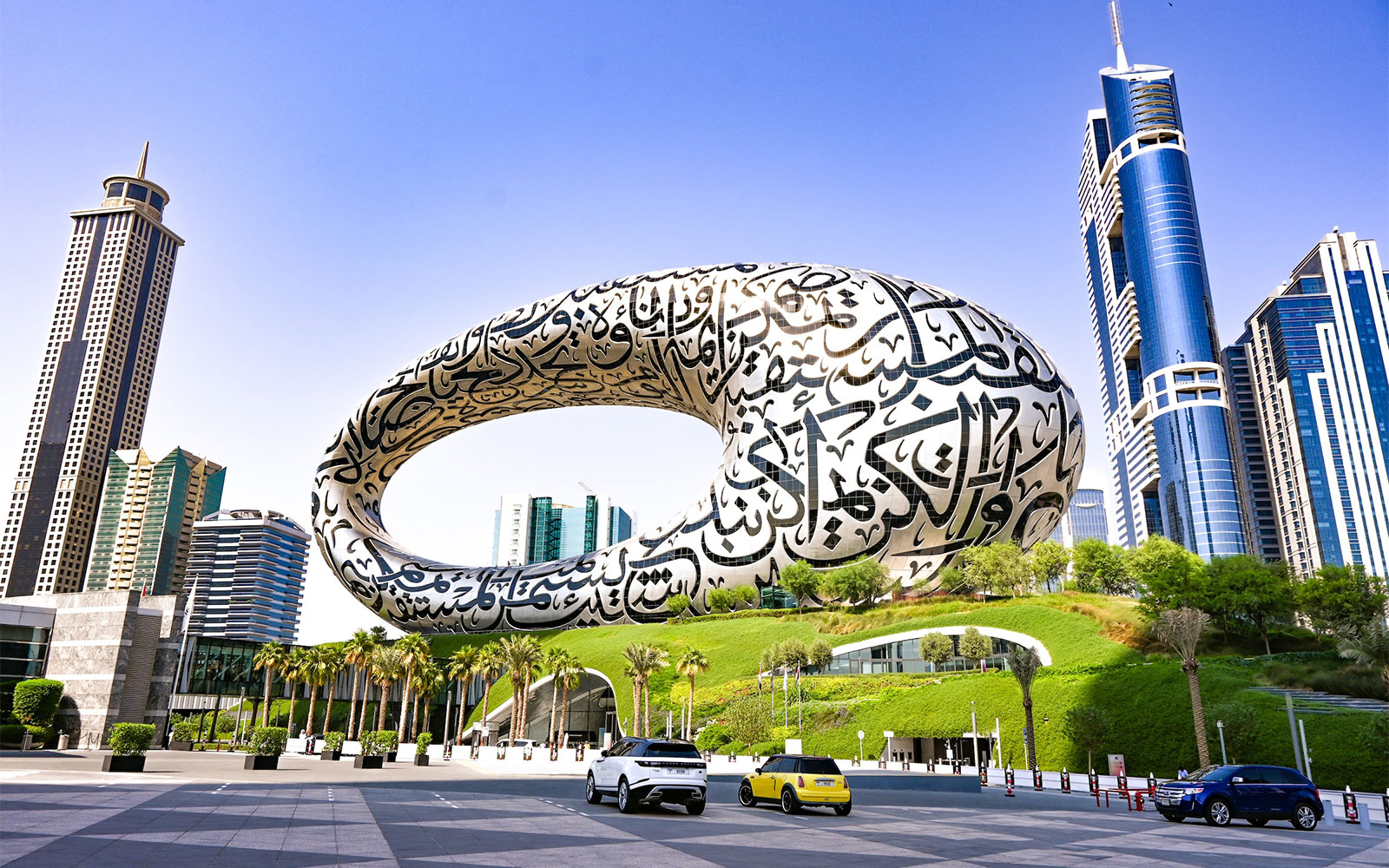
Overview
The opening ceremony of the conference will be held at the Museum of the Future, an architectural masterpiece located on Sheikh Zayed Road, near the Emirates Towers in Dubai. Known for its stunning design and innovative exhibits, the museum stands as a symbol of progress and a beacon of technological advancement.
Architectural Marvel
Designed by Killa Design and engineered by Buro Happold, the Museum of the Future is an architectural wonder. Its unique torus shape, adorned with Arabic calligraphy, represents humanity's ambition and drive to explore uncharted territories. The building itself is a testament to cutting-edge construction techniques, including the use of advanced materials and 3D printing technology.
Exhibits and Features
The Museum of the Future offers a range of interactive exhibits that provide a glimpse into the possibilities of tomorrow. The exhibits are organized into various themes, including:
Location
Museum of the Future Sheikh Zayed Road, near Emirates Towers, Dubai, United Arab Emirates (Click for Map Location)
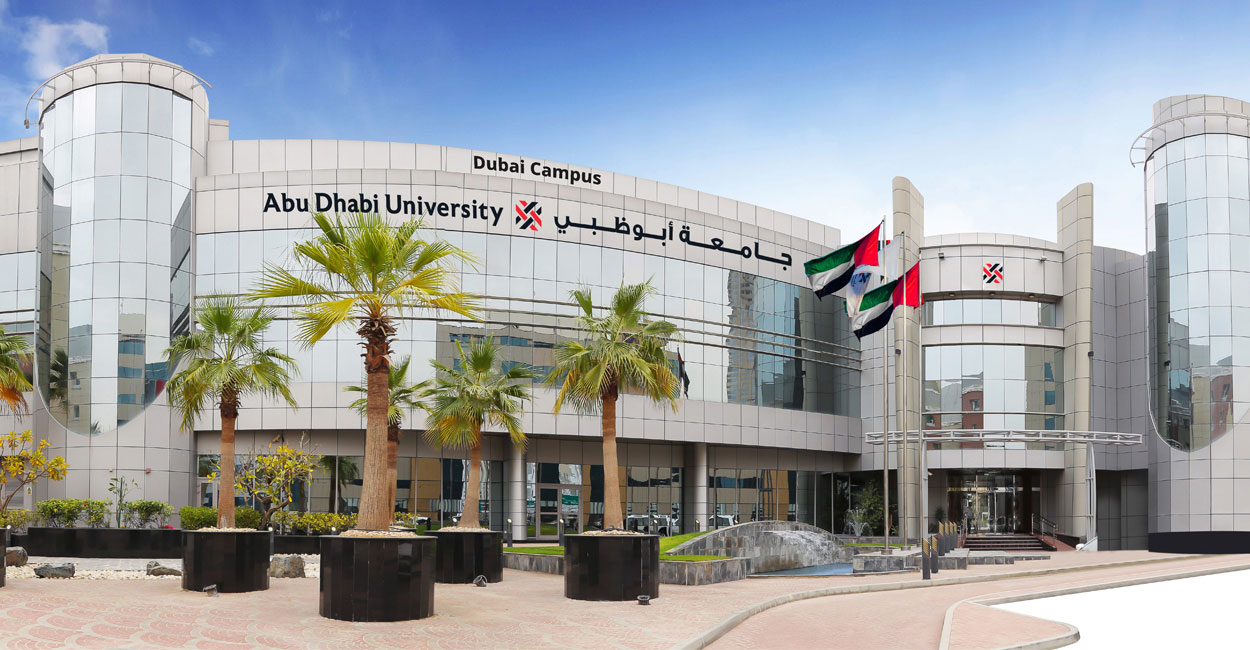
Overview
The main conference sessions will take place at the Abu Dhabi University Dubai Campus. This campus is renowned for its state-of-the-art facilities and vibrant academic environment, making it an ideal location for hosting professional and academic events.
Location and Accessibility
Located in the thriving city of Dubai, the campus is easily accessible via major transportation routes. It is situated close to numerous hotels, restaurants, and cultural attractions, ensuring that conference attendees have a pleasant and convenient stay.
Location
Abu Dhabi University, Dubai Campus Dubai Knowledge Park, Dubai, United Arab Emirates (Click for Map Location)
Summary
Combining the futuristic vision of the Museum of the Future with the modern academic setting of Abu Dhabi University's Dubai Campus, this conference promises to provide a unique and enriching experience for all participants.
IEREK has an unyielding policy regarding plagiarism. We believe that copying/taking the ideas and work of other Authors without permission and credit is fraudulent. The Reviewing committee and IEREK employees have the authority to reject a paper during its reviewing process, based on the paper being subjected to either minor or major plagiarism.
Authors must refer to, and abide by, the following instructions in submitting their abstracts/ papers:
This is not a prerequisite for presenting your work at the conference. Meaning, you can present your submitted abstract without intending to publish your work.
This process can only be initiated after payment completion and confirmation:
Registration
To help the organizers plan for inter-disciplinary dialogue, participants are requested to choose from the Conference themes/ Topics upon registration.
They must also refer to, and abide by, the following instructions in registering and/ or submitting their contributions:
NOTE: If you are contributing as an Author of a submitted abstract (for publishing consideration and/or presentation), and regardless of attendance, the fee for the registration is the same. See and Conference Fees for more information.
Types of Participation
1. Attend/ Present in-person or Online and Publish in indexed Conference proceedings
The conference offers a Physical attendance option for your convenience. That said, participants will have a chance to present their abstract/research, on campus, and have their work considered for publication in the ASTI Series by Springer as part of the conference proceedings.
See Author Instructions and Conference Fees for more information.
2. Registration to publish in the proceedings without presenting/ attending
If your full paper is accepted, it may be published in the conference proceedings book in the Advances in Science, Technology & Innovation Book Series by Springer (indexed in Scopus) even if you are not attending the conference. In this case, the accepted work will not be included in the final conference program. See Author Instructions and Publishing Opportunities for more information.
3. Non-presenting participant
Non-presenting participants may also wish to attend the conference as Audience Members or Co-authors contributing to an already submitted abstract/ paper. See Conference Fees for more information.
Notes to consider:
* Attendance online and in-person are possible upon confirmation with the conference secretariat/ coordinator at [email protected] and following Conference Fees covered.
* The participation fee is uninform for all options presented above.
* For participants wishing to attend in-person, a visa invitation letter will be provided upon request, for which case a copy of your passport will be required. The invitation letter can only be provided after acceptance and full payment.
* Before planning your trip, be sure to check travel restrictions to the conference’s hosting country. Visit travel information and restrictions, and send in your questions if you have any to the conference coordinator at the email [email protected]
All accepted submissions to the conference, after a rigorous double-blinded peer-review process by the respective and a highly-extinguished Editorial Board, will be published in one of the following:
 Advances in Science, Technology and Innovation (ASTI), an IEREK Interdisciplinary book series published by Springer Nature. (Scopus indexed)
Advances in Science, Technology and Innovation (ASTI), an IEREK Interdisciplinary book series published by Springer Nature. (Scopus indexed) About ASTI
Advances in Science, Technology & Innovation (ASTI) is a series of peer-reviewed books based on important emerging research that redefines the current disciplinary boundaries in science, technology and innovation (STI) in order to develop integrated concepts for sustainable development. It not only discusses the progress made towards securing more resources, allocating smarter solutions, and rebalancing the relationship between nature and people, but also provides in-depth insights from comprehensive research that addresses the 17 sustainable development goals (SDGs) as set out by the UN for 2030.
The series draws on the best research papers from various IEREK and other international conferences to promote the creation and development of viable solutions for a sustainable future and a positive societal transformation with the help of integrated and innovative science-based approaches. Including interdisciplinary contributions, it presents innovative approaches and highlights how they can best support both economic and sustainable development, through better use of data, more effective institutions, and global, local and individual action, for the welfare of all societies. The series particularly features conceptual and empirical contributions from various interrelated fields of science, technology and innovation, with an emphasis on digital transformation, that focus on providing practical solutions to ensure food, water and energy security to achieve the SDGs. It also presents new case studies offering concrete examples of how to resolve sustainable urbanization and environmental issues in different regions of the world. Read More.
The ASTI series is fully indexed in Scopus and any chapter/ paper published as part of this series will be seen on the Scopus database. Some titles have been successfully indexed or submitted for indexation in Web of Science (ISI).
 IEREK Press Journals, a multidisciplinary publisher that aims to cultivate and disseminate research.
IEREK Press Journals, a multidisciplinary publisher that aims to cultivate and disseminate research.
ESSD is a peer-reviewed, scholarly journal that aims to systematically develop the research-driven curiosity and evidence-based discourse of aspiring scholars that seek to contribute to the academic community. As the world is currently living in an age of information where sources are widely available on the Internet, we at ESSD seek to efficiently utilize the available information to help create robust and evidence-based knowledge. In the process, we offer researchers, in general, and young and aspiring ones in particular a quicker way to get their work published and gain exposure through online open access. We pride ourselves on getting submitted work to be published quickly, through the use of our worldwide pool of subject specialist peer reviewers. Find out more about ESSD International Journal here.

ARChive is an open-access journal that publishes conference proceedings on a wide range of topics relating to social sciences. Consequently, it accepts original research papers on a wide spectrum of subjects. ARChive is a journal published on behalf of researchers that perpetually make an effort to contribute to their fields and provide them with high visibility of research submitted. The series publishes, both, theoretical and experimental high-quality papers of current and perpetual interest. It serves to cultivate, propagate, and essentially archive academic research that has been authored and submitted for academic conferences.
Find out more about ARChive International Journal here.

Resourceedings is an open access journal that publishes conference proceedings. Conference proceedings compromise of different disciplines, ranging from Engineering including built environments, architecture, and sustainability. Disciplines also include Technology and Energy. Resourceedings is a journal that publishes research articles that shed light on different crucial issues in order to provide them with solutions and suggestions. The journal publishes articles submitted by researchers of interest in different fields.
Find out more about Resourceedings International Journal here.
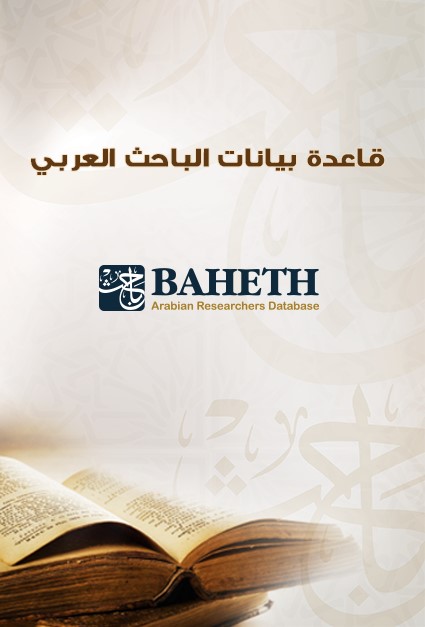
“BAHETH” in Architecture, Engineering, and Technology, is a peer-reviewed journal that publishes original academic research in the fields of Architecture, Engineering, and Technology. The journal welcomes research in the Arabic Language with an English Abstract. Papers submitted to this journal in Arabic must be presented in the English Language in the conference.
Find out more about BAHETH International Journal here.
Attending conferences is very beneficial, especially, on the professional level; conferences are full of people promoting new ideas which will expand your knowledge and undoubtedly help your career.
Moreover, all conference papers are archived online in the E-Library of IEREK‘s website where they are immediately and permanently available to the international scientific community.
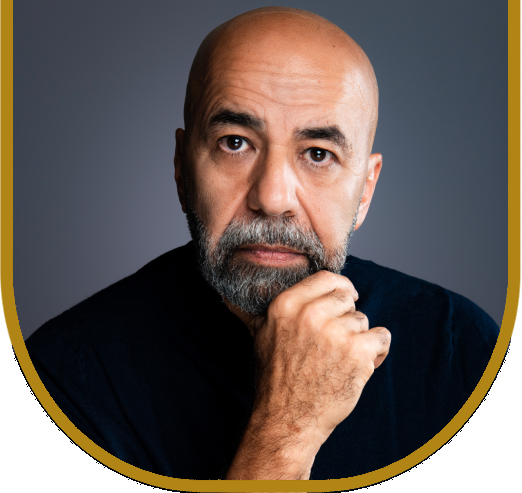
Dr. Shams Naga is the Founder and Principal of NAGA, an architecture and engineering firm with offices across the UAE, Saudi Arabia, Egypt, US, and Canada. He also spearheads the DHB Group, focused on real estate developments in the UAE and KSA. Dr. Naga holds a Master’s in Environmental Design from Alexandria University and two additional Master’s degrees in City and Regional Planning and Architecture Theory from Rutgers University and the University of Pennsylvania, where he also earned a PhD. He has held professorships in the US, Egypt, and the UAE.
Dr Naga is a visionary leader with unparalleled expertise in creating timeless designs, effective and efficient spaces and vibrant communities. He has a distinguished track record in real estate development, architecture, engineering, and project management serving clients such as Emaar, Nakheel, Omniyat, The National Housing Company (KSA), Roshn, Red Sea Global and several other prominent players in the real estate sectors in UAE, KSA and other parts of the region. He also serves as an advisor to governmental ministries and departments, making him a sought-after expert in complex real estate challenges. His innovative leadership has made NAGA Architects a leading firm in the industry that has won several awards and accolades over the years. Dr. Naga has been featured in Construction Week’s Power 100 and as one of the Top Ten Designers & Architects in the region for the past 3 years.
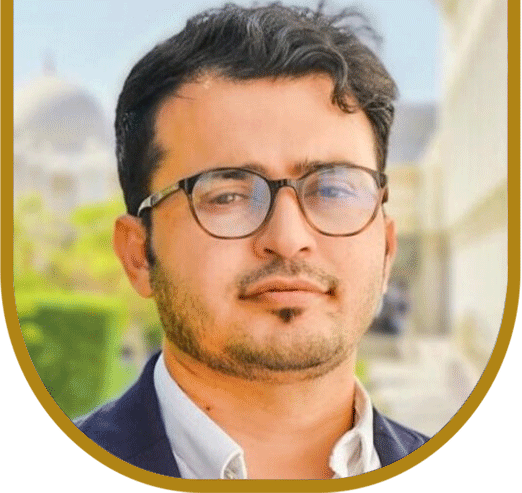
Zafar Said is an Associate Professor Department of Mechanical and Aerospace Engineering, United Arab Emirates University (UAEU). He specializes in Renewable Energy, Solar Energy, AI, and more, supporting SDGs 7, 9, 11, and 13 on clean energy, innovation, sustainable cities, and climate action. He has published over 300+ papers as per Web of Science, including in Progress in Energy and Combustion, Physics Reports, Advanced Energy Materials, Journal of Material Chemistry A, Nano Energy, Renewable and Sustainable Energy Reviews, 5 books, 30 book chapters, and 30+ conference papers), with about 19000+ citations and an H-index of 80, 3 US patents granted & 2 Indian Patents. As per Web of Science, he has 58 highly cited papers. He is also ranked in World's Top 2% Scientists 2020, 2021, 2022, and 2023 by Elsevier BV and Stanford University) in the field of Energy. He was honored with several prestigious awards, including First Place in Scientific Research in the Engineering Field Category at the 2nd Edition of the Excellence and Creative Engineering Award 2023, by Society of Engineers, UAE, 2024. First prize in the category of individual researchers and experts in the field of better integration of urban planning, Research and Innovation Award, Ministry of Energy and Infrastructure in UAE, 2023, 2022 and 2023 Rising Star Science Star award by Research.com, Sharjah Islamic Bank Award for Distinguished Researchers (2017-2018), Faculty Annual Incentive Research Award for 2018-2019, and Faculty Annual Incentive Research Award for University and Community Service 2020-2021. He has served as Plenary and keynote speaker for numerous international conferences.
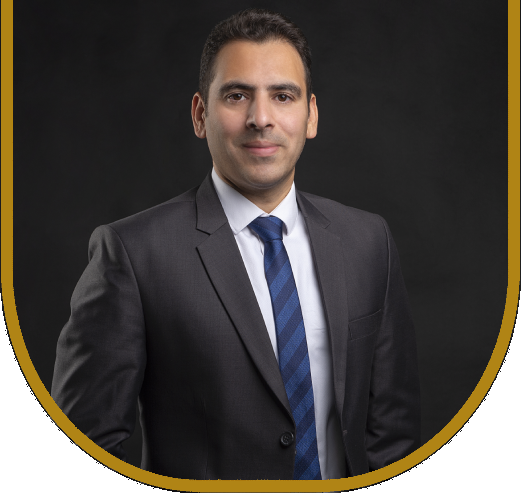
Dr. Ihsanullah is an Assistant Professor in Chemical and Water Desalination Engineering, at the College of Engineering at the University of Sharjah, UAE. He obtained his PhD degree in Chemical Engineering from KFUPM in 2017, through the fully funded competitive PhD scholarship for distinguished graduate students. He received his M.Sc and B.Sc degrees in Chemical Engineering in 2011 and 2007, respectively, from the University of Engineering & Technology (UET), Peshawar, Pakistan. He was awarded the university gold medal as an acknowledgement of his exceptional performance during his undergraduate studies. Dr Ihsanullah research interests are applications of novel materials in water treatment and desalination, adsorption, and environmental engineering. He has published around 90 research papers in high-impact refereed journals and presented his work at 15 international conferences. He is also ranked in the World's Top 2% Scientists 2021, 2022, and 2023 (Chemical Engineering and Environmental Sciences), released by Stanford University researchers (both for the single year 2021, 2022 & 2023, and career)). He is also the recipient of the KFUPM-Early Career Research Award from KFUPM for the period 2017-2022. He also holds 04 US-granted patents. His work has been cited over 7000 times with an h-index of 40. He has also been awarded the prestigious “Early Career Research Award” from KFUPM. He is serving on the Editorial Board and reviewer board of various journals as a member and has reviewed more than 500 papers for reputed journals. He has also worked as a member of the project team that successfully completed more than 50 Environmental Impact Assessment (EIA) and Environmental Monitoring projects for various clients.

Gabriele Goretti is Associate Professor at the DESTEC Department of the University of Pisa, specializing in Industrial Design (ICAR/13).
His research focuses on design innovation for high-end manufacturing districts. He teaches courses on design fundamentals, circular economy, and interior design in the Industrial Design Engineering Bachelor's program.
In 2021, he was a visiting professor at La Sapienza University in Rome, lecturing on design-driven innovation for high-end manufacturing and wearable technologies.
In 2022, he became a visiting professor at Politecnico di Milano, exploring wearable tech in relation to Italy’s fashion districts, conducting interviews with key figures in design, production, and distribution.
From 2020 to 2023, Goretti served as Associate Professor at Jiangnan University, China. Earlier, he was Associate Professor at Nanjing University (2018-2020). From 2007 to 2018, he was a research fellow at the University of Florence’s DIDA Department. From 2014 to 2018 Fashion Coordinator at IED Florence.

Paolo Petrocelli has established himself as one of the leading cultural leaders of his generation on the international scene.
As Head of Dubai Opera, he plays a key role in developing the performing arts in the Middle East and beyond. Dr. Petrocelli has not only promoted artistic excellence and brought world-class performances to the Region but has also actively fostered a sense of belonging and appreciation for diverse cultures, spearheaded initiatives to promote accessibility, inclusivity, and education in the arts.
Paolo Petrocelli has been recognized as a Young Global Leader by the World Economic Forum for continued contributions to arts and culture and selected by the think tank Friends of Europe among the 40 most influential young personalities in Europe and nominated European Young Leader.
He has been recognized by Arabian Business as one of the top 30 leaders under 40 in the Middle East and named by Fast Company as one of the most creative personalities in the Middle East.

Dr. Ioannis Zuburtikudis is an experienced, licensed chemical engineer and professor of chemical engineering at Abu Dhabi University (ADU), where he also serves as the department chair. He was educated in Greece and the USA, where he worked as a Research Scientist. Upon returning to Greece, Ioannis worked as a Field Chemical Engineer at Hellenic Petroleum Co. He later joined Greek academia and founded the NanoMaterials & Manufacturing Processes Laboratory (www.nanohybrid.eu).
His research focuses on the intersection of nanotechnology, chemical reaction engineering, soft matter, and sustainability. Dr. Zuburtikudis has received many research grants from agencies in Greece, the EU, and the UAE. His recent projects address critical needs for sustainable development in the UAE, including the innovative use of recycled plastics, the design and development of advanced nanofiltration membranes for water treatment, and the implementation of Circular Economy principles in process engineering.
Ioannis has published over two hundred articles in peer-reviewed journals and conference proceedings and has supervised many undergraduate and graduate students. He serves as a reviewer for research proposals funded by government agencies and academic institutions in Greece and the UAE and regularly reviews submissions for scientific journals in his field. Additionally, he has organized several European and international conferences.

Born 1958, Ross Lovegrove graduated from Manchester Polytechnic with 1st Class BA Hons Industrial design in 1980 and took a Master of Design at the Royal College of Art, London in 1983. In the early 80’s worked as a designer for Frog Design in West Germany on tech projects for companies like Sony and Apple; he later moved to Paris as a consultant to Knoll International, for which he created the highly successful Alessandri Office System.
Invited to join the Atelier de Nimes in 1984, alongside with Jean Nouvel and Phillipe Stark, he consulted amongst others: Cacharel, Louis Vuitton, Hermes and Dupont. Returning to London in 1986 he has since worked on projects for Airbus Industries, Kartell, Ceccotti, Cappellini, Moroso, Luceplan, Driade, Peugeot, Apple, Issey Miyake, Vitra, Motorola, Biomega, LVMH, Narciso Rodriguez, Yamagiwa, Tag Heuer, Swarovski, Herman Miller, Artemide, Renault, Japan Airlines, Toyo Ito Architects, Kenzo, Valextra, GH Mumm, LG, F1, Samsung and KEF.
Winner of numerous international awards his work has been extensively published and exhibited internationally including the Museum of Modern Art in New York, the Guggenheim Museum NY, Axis Centre Japan, Pompidou Centre, Paris and the Design Museum, London, when in 1993 he curated the first permanent Design collection. His work is held in permanent collections of various design museums around the world including the Museum of Modern Art in New York (MOMA), the Design Museum in London, the Vitra Design Museum, in Basel, the Die Neue Sammlung, in Munich and the Centre Pompidou, in Paris.
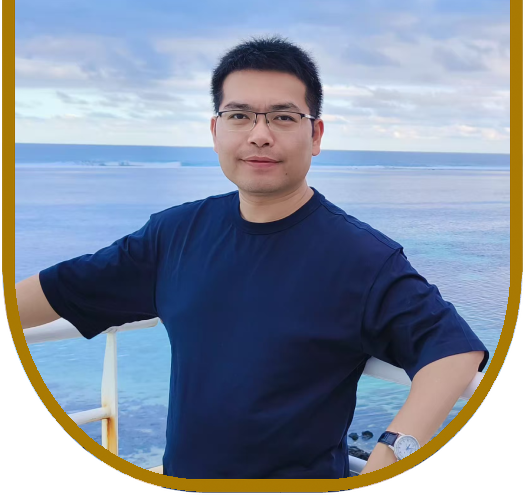
Dr. Zheng Liu is professor and dean of Internation Institute of Fashion Technology, Fashion design college of Istituto marangoni, Zhejiang Sci-Tech University. He also is the deputy director of Key Laboratory of Silk Culture Inheriting and Products Design Digital Technology, Ministry of Culture and Tourism, P.R.China.
He has been engaged in 19 years of professional fashion education and research work in universities, and has worked as a visiting scholar for 13 months at UNT in the United States. He is the leading figure in the field of Fashion Design and Engineering at the college. His research focuses on the application of digital technology, particularly AI, in fashion design and presentation. This includes digital innovative design of traditional textiles, AGCI for design of fabrics and garments, 3D virtual fitting of clothing, and video generation.
He cooperated with the fashion industry to complete many innovative projects of product research and development, improve design efficiency and product quality, and won the Science and Technology Award of China Textile Industry Federation.


Luca Finotti is an Italian designer and director who has made fashion films for Nike, Versace, Dolce & Gabbana, Giorgio Armani, Givenchy by Ricardo Tisci, Moschino, Hugo Boss, Golden Goose Deluxe Brand, Jeremy Scott, Adidas, River Island, Tod's, Cover Girl, Rimmel London Look, Martini, MSGM and Pitti, to name but a few. He has also collaborated with international magazines such as Vogue Italia, Vogue China, Dazed & Confused, i-D Magazine and Hercules Magazine.
With a degree in marketing and economics from the renowned Luigi Bocconi University in Milan and after studying film at the New York Film Academy, Luca acquired all the necessary skills to become a successful director of artistic and viral films, combining powerful moving images with the development of social media. His creations always start with an idea that is then developed based on trend research to ensure the global virality of each film and campaign and to make each project a visible and sharable online experience in the millennial era. His projects have achieved a high level of virality across all new media, allowing them to become widely known.
His portfolio is full of national and international stars such as Lady Gaga, Jeremy Scott, Sita Abellan, Gigi Hadid, Monica Bellucci, Sofia Vergara, Paris Jackson, Emmanuelle Seigner, Roberto Rossellini, CL, Stephen Dorff, Marco Mengoni, Amanda Lepore, Janelle Monae, Bianca Balti, Karlie Kloss, Simone Nobili and Simon Nessman. Earlier in his career he worked with the likes of Arianne Phillips, Michelangelo di Battista, Nicola Formichetti, André Turpin, Anna Dello Russo, Mariano Vivanco, Jenke Ahmed Tailly, Sara Maino, Paolo Zagoreo and Giovanni Dario Laudicina.
For his recent project Versace Manifesto , he won the Best Director award at the prestigious Cinemoi Film Festival 2018 in Los Angeles. His project #WeBelievelnThePowerOfLove for Nike was screened and won over 25 film festival awards and official selections worldwide.

Sofia studied classics and architecture at the University of Florence before furthering her education at the Fashion Institute of Technology. After settling in Paris, she joined DIOR as a designer during the John Galliano era, immersing herself in the world of couture and cinematic fashion shows. With a passion for luxury and craftsmanship, Sofia later founded her own consulting company and worked with renowned brands, including Karl Lagerfeld. Throughout her career, she explored various artistic projects, such as costume design for contemporary ballets. Driven by a desire to create positive change, Sofia founded AELIS in 2017, the first sustainable and ethical couture house, dedicated to women’s empowerment and environmental respect.
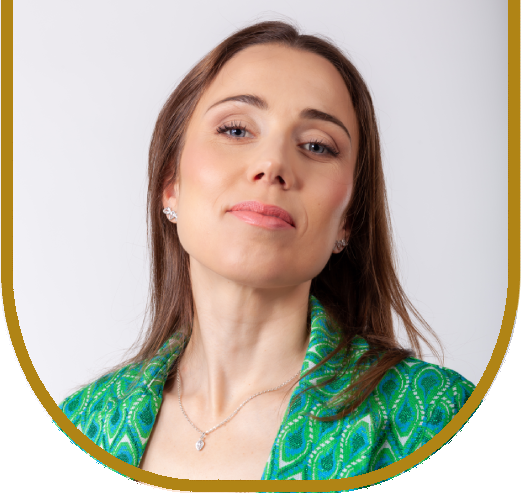
Rita Trombin, President of the Italian Academy of Biophilia (AIB), is an Environmental Psychologist and a prominent expert in Biophilic Design. Her mission is to promote the concept of Biophilia. our innate bond with nature to enhance wellbeing, foster prosperity, and support environmental stewardship. A renowned TEDx speaker and recognized by Fortune as one of Italy's Most Powerful Women, Rita has been a key advocate for establishing Italy’s first Biophilic City. Through her extensive work in education, public outreach, research, and consulting, she translates scientific evidence into actionable strategies to create healthier, more sustainable, and nature-connected environments. Rita’s leadership and commitment are actively shaping a society that prioritizes human and environmental wellbeing, inspiring a global shift towards harmonious coexistence with nature.
|
Cancellation Policy |
Up to 60 days before the event |
Up to 50 days before the event |
Up to 40 days before the event |
39 days before the event |
|
Penalty |
20% |
50% |
70% |
100% |
EXCEPTION
A refund is not possible if
-An acceptance letter has been issued (Authors only)
-The proceedings of the event have been published (Authors only)
If the reason for rejection is not related to any of the aforementioned and is an error on the participant’s part, the following will apply:
*Authors: may choose to let their co-author present his/her research on his/her behalf free of charge. If the author does not have a co-author, a member of the scientific committee shall present on the author’s behalf.
*Audience members/Registrants: will only be allowed to attend another similar event of their choosing that is organized by IEREK free of charge.
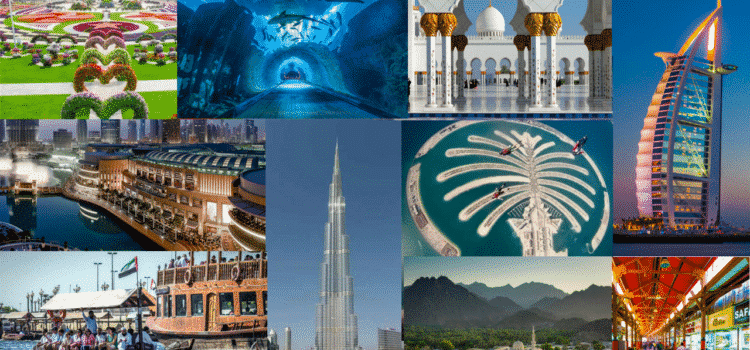
Dubai is a vibrant and modern city known for its stunning architecture, luxury shopping, and diverse attractions. Here are some places you might consider visiting in Dubai:
Burj Khalifa: The world's tallest building, offering breathtaking views of the city from its observation decks.
The Dubai Mall: One of the largest shopping malls globally, featuring an extensive range of shops, restaurants, and entertainment options. It also houses attractions like the Dubai Aquarium and Underwater Zoo.
Burj Al Arab: A iconic, sail-shaped hotel that is often considered one of the most luxurious hotels in the world. While you may not stay there, you can visit some of its restaurants and bars.
Palm Jumeirah: A man-made island in the shape of a palm tree, featuring luxury resorts, private villas, and an array of dining and entertainment options.
Dubai Marina: A stunning man-made canal city with a range of restaurants, shops, and entertainment options. You can also take a boat tour or enjoy a walk along the promenade.
Dubai Fountain: Located outside the Burj Khalifa and Dubai Mall, the fountain is illuminated by lights and performs water dances set to music, creating a captivating spectacle.
Jumeirah Beach: A beautiful public beach with white sands and clear blue waters, offering a relaxing escape from the city's hustle and bustle.
The Dubai Miracle Garden: A breathtaking garden with a variety of colorful flowers arranged in creative displays. It's especially beautiful during the cooler months.
Dubai Opera: A world-class venue for performing arts, including opera, ballet, and concerts. The architecture itself is worth admiring.
Ski Dubai: Located in the Mall of the Emirates, this indoor ski resort allows you to experience winter sports in the middle of the desert.
Al Fahidi Historic District (Al Bastakiya): Dubai's historic district with narrow lanes, traditional wind-tower architecture, art galleries, and museums.
Dubai Creek: Take an abra (traditional boat) ride along the Dubai Creek to experience the city's history and see the blend of old and new Dubai.
Dubai Frame: A modern architectural marvel offering panoramic views of both old and new Dubai.
Dubai Desert Conservation Reserve: If you're interested in desert experiences, you can take a desert safari to explore the dunes and enjoy traditional activities like camel riding and sandboarding.
For your convenience, we have compiled a list of recommended hotels near both the Museum of the Future and Abu Dhabi University Dubai Campus.
Rove Downtown
Novotel World Trade Centre Dubai
Ibis One Central
Holiday Inn Express Dubai Safa Park
Premier Inn Dubai Al Barsha
Atana Hotel
Holiday Inn Express Dubai Internet City [[Nearest to the campus]]
Mercure Dubai Barsha Heights Hotel Suites
In the past, Dubai was a small city that depended on fishing and pearl trade , but now it has become one of the most important cities in the world. The city is home to about 200 nationalities and provides wonderful experiences for all visitors in different areas such as Dubai Creek, Downtown Dubai, Burj Khalifa , and much more. Dubai is also distinguished by its beautiful beaches, wonderful desert, and amazing tourist attractions.
Located in Al Garhoud, Dubai International Airport is about a 20-minute taxi journey to Dubai Mall and Burj Khalifa in the central district of Downtown Dubai. From the airport to Abu Dhabi is around 90 minutes by taxi.
Here are the various transport methods to get to and from the airport:
By Taxi: Taxis are always plentiful in Dubai International Airport (DXB) and offer an easy way to reach your destination in the city. Prices start at AED25 and the charge for each kilometre after is around AED2. Dubai Mall and Burj Khalifa are around a 20-minute drive from the airport, while Abu Dhabi Corniche is about one and a half hours away. You can also book a Tesla taxi before your flight and your driver will be waiting on arrival, with a fixed cost based on the kilometres travelled.
By Rental Car: You can drive into town by renting a car from numerous well-known companies at Dubai International Airport, including Thrifty, Hertz, Sixt and Dollar.
By Dubai Metro: The Red Line of the Dubai Metro connects directly to Terminals 1 and 3, making this a quick and inexpensive way to venture to and from the airport. Be sure to check the metro’s daily opening times before you arrive, as it is likely to be closed in the early hours of the morning.
By Bus: There are a variety of buses that transport passengers to and from the airport. These include 11A from Terminal 1 (which goes to Gold Souq Bus Station), 13B from Terminal 2 (which goes to Al Qusais Bus Station) and 77 from Terminal 3 (which goes to Baniyas Square). Please note that you will need to purchase a Nol card before you take the metro or bus.
By Shuttle: There is a free shuttle service between DXB and DWC airports which departs every 30 minutes, 24 hours a day.
Here you can access the previous edition's highlights and overview:
The 1st Edition of EDMSET:
https://www.ierek.com/events/environmental-design-material-science-and-engineering-technologies#overview







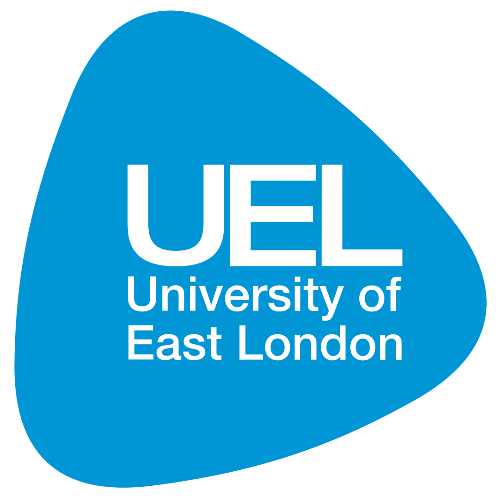







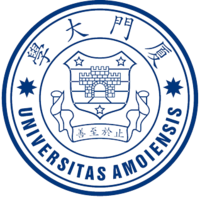

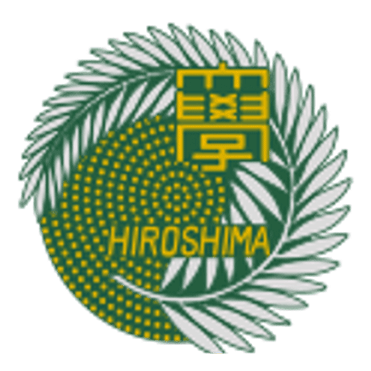
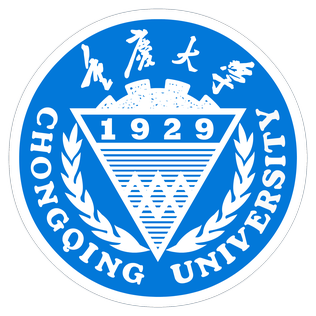
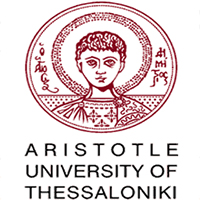
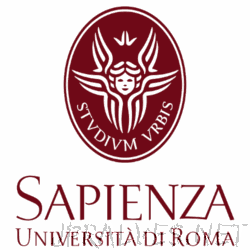
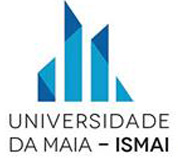



Associate Professor
Department of Architecture and Interior Design, Abu Dhabi University, UAE

President of the Italian Academy of Biophilia (AIB), is an Environmental Psychologist and a prominent expert in Biophilic Design.
Istituto Marangoni Dubai – UAE
Subscribe to our newsletter
Join IEREK community